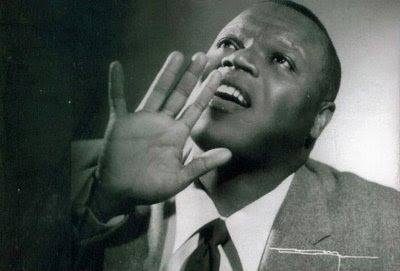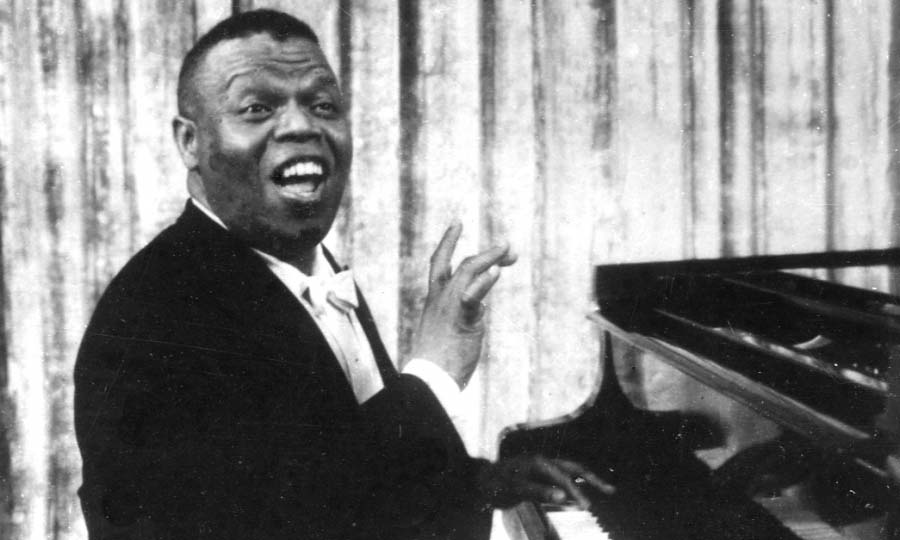
BOLA DE NIEVE, UN CANTANTE QUE APRENDIO DE LOS CHANSONNIER FRANCESES ADAPTANDOLO A LA IDIOSINCRACIA CUBANA. PHOTOS/ VIDEOS.
Ignacio Jacinto Villa Fernández nacido en el pueblo de Guanabacoa, Cuba, un 11 de septiembre de 1911, más conocido por su nombre artístico Bola de Nieve, fue un pianista, compositor y cantante cubano.
Ignacio Jacinto Villa Fernández “Bola de Nieve” empezó a estudiar música a los 8 años en el Conservatorio de Guanabacoa, más tarde empezó a estudiar magisterio, pero la música lo llamó con más fuerza, primero como pianista del cine silente o acompañante de figuras reconocidas, y luego como intérprete excepcional de la música afro, pero también de canciones de cuna y románticas.
CARRERA ARTISTICA
Muy temprano, Bola de Nieve aprendió mucho de los chansonnier franceses, y luego adaptó a la idiosincrasia cubana, un estilo interpretativo que incluía la declamación y la interpretación de un personaje, de modo que se adentraba en la canción, descubría su espíritu, y se la devolvía al público con una gracia, un ritmo, una expresividad y una honestidad inigualables.
A todo ello se sumaba la capacidad del artista para interpretar canciones en distintos idiomas como catalán, portugués, inglés, francés e italiano, sin salirse nunca de su estilo, al mismo tiempo cubanísimo y universal. Entre sus antológicas interpretaciones se cuenta Tu no sabe inglé, Vito Manué, de Eliseo Grenet y Nicolás Guillén, que inclinó su repertorio a este tipo de canciones burlonas de quien cree ser más de lo que es.
En el extremo opuesto, está su magistral, dramática interpretación de Vete de mí, porque El Bola fue un hombre atormentado por el desamor, los temas raciales y por su inclinación homosexual. Así y todo se las arregló para darle muchísima alegría a su público. Como compositor, le debemos algunas bellísimas canciones como Si me pudieras querer, Ay, amor y, Tú me has de querer, entre otras, versionadas por decenas de cantantes cubanos y extranjeros.
Fue embajador de la música cubana, muy reconocido en Europa, Suramérica y Estados Unidos, donde llegó a presentarse en el Carnegie Hall de Nueva York, donde los aplausos lo hicieron salir nueve veces al escenario a agradecer al público que lo ovacionaba.
Bola de Nieve fue de los pocos artistas que mantuvo una popularidad indeclinable antes y después del triunfo de la Revolución. En 1950 se inició en la radio CMQ El gran show de Bola de Nieve. A finales de los años sesenta y principios de los setenta se presentaba con asiduidad en la televisión, mientras cultivaba un selecto grupo de admiradores en el restaurante Monseñor, como figura imprescindible de la bohemia habanera.
Miriam Ramos o Pancho Céspedes le han dedicados álbumes enteros a Bola de Nieve, mientras Carlos Varela le rindió homenaje en una de sus canciones más populares de los años noventa, aquella que lo describe, con indudable cariño y respeto, como “negro piano man, con la voz gastada ya de tanto madrugar”
La muerte sorprendió a Ignacio Villa en Ciudad México, en viaje hacia América del Sur, donde continuaría su gira de conciertos un 2 de Octubre de 1971 y su cadáver fue trasladado a Cuba y sepultado en su querida Guanabaco. En Guanabacoa nacieron también Ernesto Lecuona y Rita Montaner, también ligados a lo mejor de la música cubana en la primera mitad del siglo XX.


BOLA DE NIEVE, A SINGER WHO LEARNED FROM FRENCH CHANSONNIERS AND ADAPTED THEM TO THE CUBAN IDIOSYNCRACY. PHOTOS/ VIDEOS.
Ignacio Jacinto Villa Fernández, born in the town of Guanabacoa, Cuba, on September 11, 1911, better known by his stage name Bola de Nieve, was a Cuban pianist, composer and singer.
Ignacio Jacinto Villa Fernández “Bola de Nieve” began studying music at the age of 8 at the Guanabacoa Conservatory. Later, he began studying teaching, but music called him more strongly, first as a silent film pianist or accompanist for well-known figures, and then as an exceptional performer of Afro music, but also of lullabies and romantic songs.
ARTISTIC CAREER
Bola de Nieve learned a lot from French chansonniers very early on, and then adapted to the Cuban idiosyncrasy, an interpretive style that included declamation and the interpretation of a character, so that he entered into the song, discovered its spirit, and returned it to the public with unmatched grace, rhythm, expressiveness and honesty.
Added to all this was the artist’s ability to interpret songs in different languages such as Catalan, Portuguese, English, French and Italian, without ever straying from his style, which was at the same time very Cuban and universal. Among his anthological interpretations is Tu no sabe inglé, Vito Manué, by Eliseo Grenet and Nicolás Guillén, who leaned his repertoire towards this type of mocking songs of those who believe themselves to be more than they are.
At the other extreme, there is his masterful, dramatic interpretation of Vete de mí, because El Bola was a man tormented by heartbreak, racial issues and his homosexual inclination. Even so, he managed to give his audience a lot of joy. As a composer, we owe him some beautiful songs such as Si me podras querer, Ay, amor and Tú me ha de querer, among others, covered by dozens of Cuban and foreign singers.
He was an ambassador of Cuban music, very well known in Europe, South America and the United States, where he performed at Carnegie Hall in New York, where the applause made him come out on stage nine times to thank the audience who cheered him.
Bola de Nieve was one of the few artists who maintained an unwavering popularity before and after the triumph of the Revolution. In 1950, El gran show de Bola de Nieve began on CMQ radio. In the late sixties and early seventies he appeared frequently on television, while cultivating a select group of admirers at the Monseñor restaurant, as an essential figure of Havana’s bohemian scene.
Miriam Ramos and Pancho Céspedes have dedicated entire albums to Bola de Nieve, while Carlos Varela paid tribute to him in one of his most popular songs of the nineties, the one that describes him, with undoubted affection and respect, as “black piano man, with a voice worn out from getting up so early.”
Death surprised Ignacio Villa in Mexico City, on his way to South America, where he would continue his concert tour on October 2, 1971, and his body was taken to Cuba and buried in his beloved Guanabaco. Ernesto Lecuona and Rita Montaner were also born in Guanabacoa, also linked to the best of Cuban music in the first half of the 20th century.
Agencies/ CiberCuba/ Joel Del Río/ BoladeNieveBio./ Extractos/ Excerpts/ YouTube/ Internet Photos/ Arnoldo Varona.
www.TheCubanHistory.com
THE CUBAN HISTORY, HOLLYWOOD.




 BOLA DE NIEVE, UN CANTANTE QUE APRENDIO DE LOS CHANSONNIER FRANCESES ADAPTANDOLO A LA IDIOSINCRACIA CUBANA. PHOTOS/VIDEOS. * BOLA DE NIEVE, A SINGER WHO LEARNED FROM FRENCH CHANSONNIERS AND ADAPTED THEM TO THE CUBAN IDIOSYNCRACY. PHOTOS/ VIDEOS.
BOLA DE NIEVE, UN CANTANTE QUE APRENDIO DE LOS CHANSONNIER FRANCESES ADAPTANDOLO A LA IDIOSINCRACIA CUBANA. PHOTOS/VIDEOS. * BOLA DE NIEVE, A SINGER WHO LEARNED FROM FRENCH CHANSONNIERS AND ADAPTED THEM TO THE CUBAN IDIOSYNCRACY. PHOTOS/ VIDEOS.